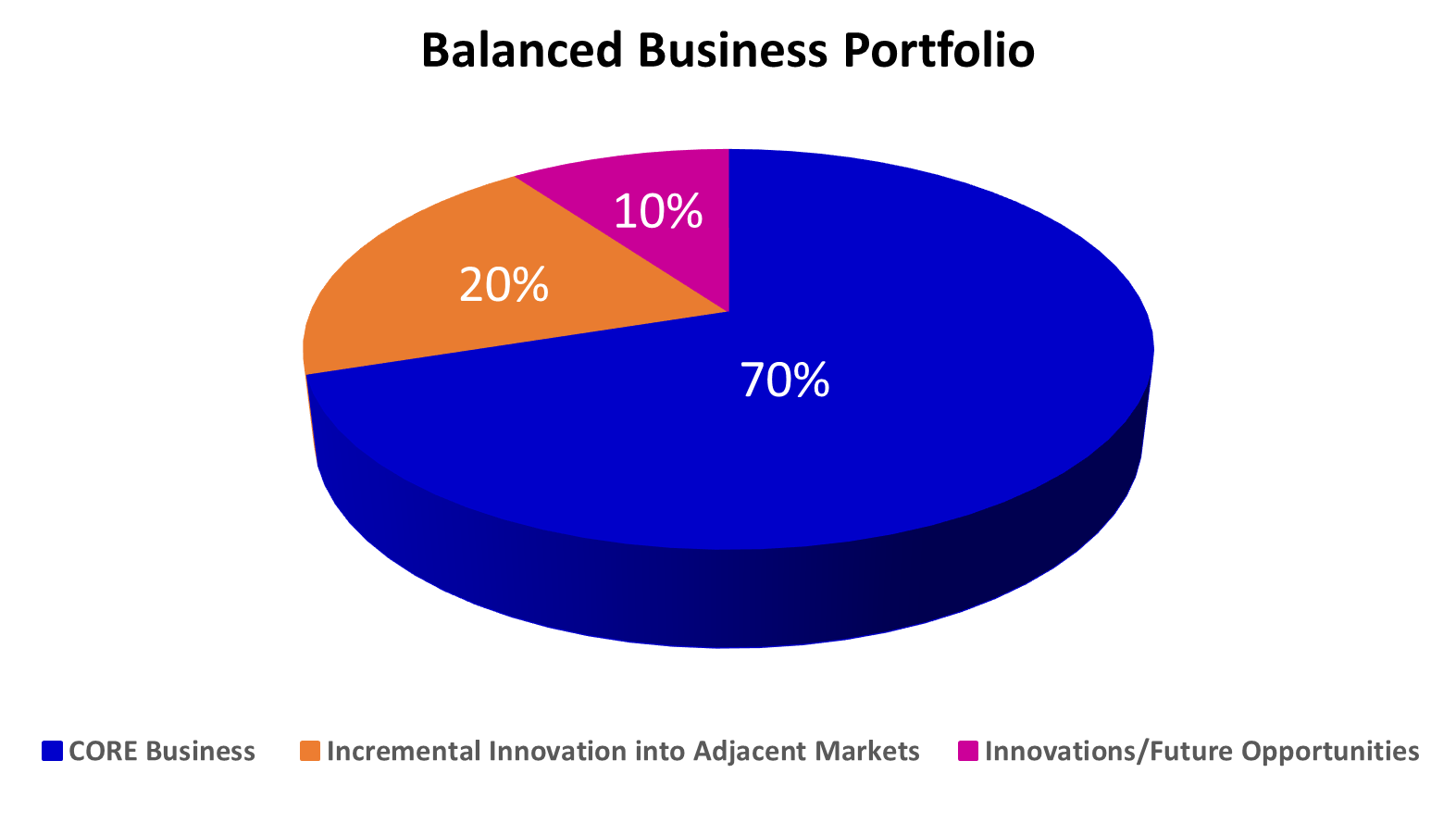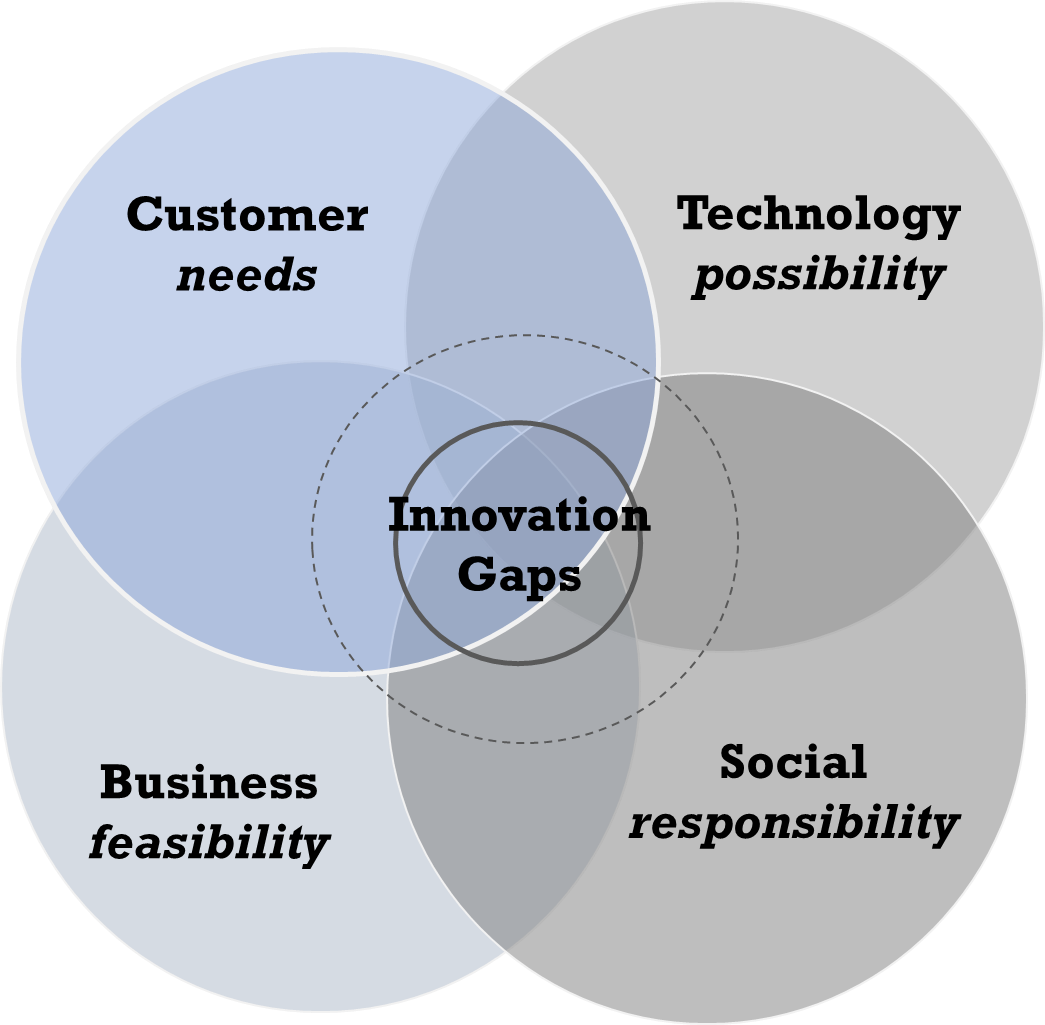The Growth Dilemma: Keep The Core Business Healthy and Focus on Innovation
Digitization is impacting everything, from how we live, work to how we play. It is changing the world around us at an incredible pace, while many industries are lowering their entry barriers at the same time. This development has led to massive fragmentation of markets and intense cost competition. Although all these factors combined create a highly uncertain environment with inequality at the forefront, it also allows increasingly more empowered humans to take over responsibility and take action in achieving common goals.
In this constantly changing world, we are inevitably facing a growth dilemma: Big companies tend to ignore small but disruptive opportunities, while smaller companies lack resources to scale up innovative ideas to disrupt the market. Nonetheless, there are few areas companies can explore in order to find solutions to their growth dilemma. These strategies go beyond the usual short-performance cycles and look at long-term perspectives.
Creating new disruptive value networks and ambidextrous business models is critical in providing the pillars that support and maintain a stable core business portfolio, while accelerating growth through disruption. This is fundamental especially in highly competitive and new emerging markets. For the purpose of this article, the focus will be set on the following:
How can companies identify areas to imbed technology for future growth opportunities within their business models that go beyond operational efficiency?
To what extent do new technology advancements like AI and ML impact current business operations and growth opportunities?
What are the associated adoption rates, costs, times, and risk exposures in relation to the potential outcomes?
Building Ambidextrous Business Models and Understanding How To Apply Them
The model can be divided into two pillars. The first pillar of the model is built around the current business and how it can be kept stable while new opportunities are being explored. The challenge lies in ensuring a balanced growth portfolio with a core that operates at an optimum value, while sufficient resources and capabilities are being employed in identifying new value gaps through trend and big data analysis. Developing supporting technological infrastructures while mitigating associated risks of exploring unknown areas of future growth is a difficult process that can be managed with technological tools such as artificial intelligence and machine learning.
With a stable core, organisations will be able to generate revenue and profit that can be further reinvested into supporting the innovation development. However, both external and internal pressures might lead to slow improvements in terms of performance thresholds and targets. In this process, it is of utmost importance that organisations accelerate the development of their future core by driving the growth of their existing portfolio tenfold in order to extend their adjacent and future core business segments. To achieve this objective, organisations need to genuinely understand the evolving customer needs and market trends, and make use of the opportunities that will then present themselves more clearly.
On the other hand, the second pillar seeks to explore innovation gaps and how these could accelerate and drive business growth through disruption of the markets utilising new dimensions of consumer behaviour established in the first pillar. Breakthrough innovations are and will continue to be driven by multi-dimensional variables but it has become essential for businesses to design solutions and processes tat not only allow but provide for transformational and disruptive strategies. By using human centric design thinking techniques, companies can scope new creative and innovative ideas for products and services that are able to satisfy current or future customer needs in the best way possible. Nonetheless, these are dependent and influenced by market dynamics and available platforms, e.g. 5G, that must be explored through a creative lens.
How To Build Sharper and More Expansive Innovations?
In our opinion, five key steps are:
Identify and clearly define the opportunities/innovation gaps that emerge as the common area between customer needs, technological possibilities, business feasibility, and social responsibility.
Reframe future value-based objectives specifically around consumer behaviour.
Create innovative business models that are both adaptive and resilient.
Develop meaningful partnerships through open innovation that drive faster growth.
Explore the stewardship of the environment, i.e. B-Corps and the B-Economy.
The continuous evolution within businesses and the adoption of new models is an expected phenomenon. Therefore, building required resilience and flexibility to not only respond to the emerging trends but taking lead and creating value for the future will be vital. Organisations that look to creative collaboration through open innovation will remain at the forefront of breakthroughs and establishing new tradable value. This forms the foundation for ambidextrous models that harness continued growth of the core and provide opportunities for future growth, which eventually leads to future-proofing.
Finally, the Henry Ford quote remains relevant: “If I had asked people what they wanted, they would have said faster horses…”
For further insights and comments, feel free to contact the authors with your view, questions, and thoughts.


